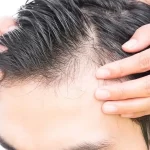Pores are small holes on the skin’s surface. When it develops bigger, it may provide the skin tone with an uneven look comparable to that of an orange peel. Oil pores and sweat pores are the two kinds of pores (hair follicles). Mostly, oil pores seem bigger.
What Elements Cause Enlarged Pores?
Micropores in the skin’s surface called pores let sweat and oil from glands below the skin’s surface reach the surface. The two types of pores are oil pores and sweat pores. There are many reasons why oil pores may seem large, including:
Our skin loses collagen and suppleness as we age, giving it a drooping, dry, and wrinkled appearance. The pores seem larger as a result.
Sebum overproduction: The sebaceous glands of the skin secrete sebum, which is used to nourish the skin and prevent moisture loss while also protecting it from touch. On the other side, it has been discovered that excessive sebum production results in blocked pores, which eventually result in bigger pores.
Males often have more pronounced facial pores than females. Men’s facial pores are often bigger, and they produce more sebum than women do.
Excessive sun exposure may destroy collagen, causing pores that are bigger.
Use of skincare products: Cosmetics and skincare products like foundation and blush may clog pores and cause them to enlarge.
A spike in the hormones follicle-stimulating hormone and luteinizing hormone during ovulation may increase the production of sebum, resulting in larger pores in females.
Acne, blackheads, and whiteheads are all signs of clogged pores, which may also cause the pores to enlarge and become more noticeable.
What Cosmetic Treatments Are Available To Reduce Big Pores?
Laser treatments, chemical peels, microdermabrasion, and microneedling are all popular enlarged pores treatments.
Peeling Agent
Chemical peels employ chemicals to cause regulated skin inflammation, forcing the skin to lose its surface cells. This stimulates the renewal and remodeling of the skin’s epidermal and dermal layers, resulting in enhanced appearance and texture. Based on the degree of absorption of the skin, which impacts the quantity of skin lost, different chemicals are utilized.
Prior to the therapy, you’ll meet with the cosmetic doctor, who will analyze the type of skin and inspect your skin issues. They will next carefully pick the sort of chemicals that will be used in the chemical peel based on your type of skin and state.
The doctor will normally begin the enlarged pores treatment by wiping the makeup and washing your face. The exfoliating chemicals are then applied to thicker sections of the face like the nose, cheeks, forehead, and chin before going on to other areas of your face like around the lips and the eyes. While the therapy is not painful, it does induce moderate discomfort or stinging. A cool fan may be used by your doctor to assist ease the stinging feeling.
Laser Therapy
At specific frequencies, lasers emit powerful energy beams that pierce the skin. Different lasers generate lasers with different wavelengths. Both ablative and non-ablative lasers may help to minimize large pores and make them less noticeable.
The top layer of skin is removed by an ablative laser while the deeper layer is heated (dermis). Collagen production is increased as a result, improving skin tone and texture. Large pores get smaller and less noticeable as a result. Ablative lasers include CO2 lasers, erbium lasers, and combination lasers.
On the other hand, non-ablative lasers burn off the deeper skin layer without harming the top layer, promoting the growth of collagen and improving the tone and texture of the skin.
The most frequent side effects of laser resurfacing include swelling, redness, and itching. Within a few days, these would resolve on their own.











